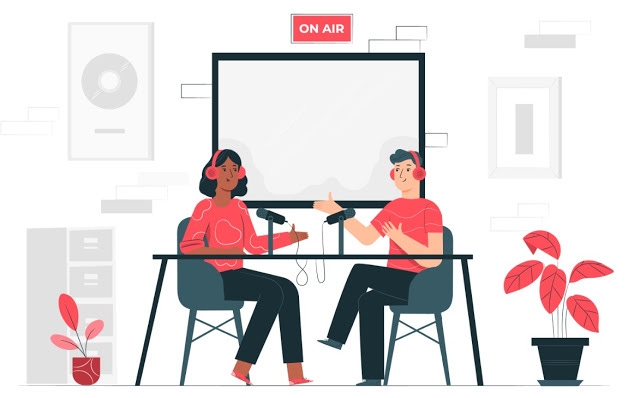What Spotify, NYT and News Corp earnings tell us about the state of journalism
Future News 50
We should start to look at major podcast outlets more like book publishers. There is a mix of big-name celebrity signings, ever-green non-fiction content (for books it’s cooking, for podcasts its mindfulness) and independently produced content.
A point in case would be Michelle Obama, who recently launched her new podcast, Higher Ground, exclusively on Spotify. The former First Lady has also released her own playlist to promote the pod.
Not only does Spotify attract potential new subscribers to its platform via Obama’s involvement, but her content is also regularly aggregated and covered by major news outlets. It’s great marketeering and something the company will hope to achieve with quite a different listener demographic via its multi-year licence deal with The Joe Rogan Experience, a partnership that starts in September.
Rogan, unlike Obama, built his podcast up from scratch, with the first episode airing more than a decade ago. His content would therefore fall in the last category – independently produced content. The show will have a $46.8bn market cap company behind it.
Podcasts are becoming more and more important to Spotify. Over 20% of the platform’s 299m monthly active users (MAUs) engage with the content, up from 19% of MAUs in Q1 2020.
The company even launched 110 podcast playlists across six markets in Q2 2020 in a bid to drive discovery and its catalog is growing rapidly. Spotify has more than 1.5 million shows, 50% of which launched in 2020 – a year after its acquisition of networks Gimlet and Anchor.
It is also trying to solve the engagement to revenue gap, with in-app offers powered by its news ‘Streaming Ad insertion’ technology alongside a $20m advertising partnership with Omnicom Media Group.
In short, Spotify wants to make more money out of podcasts in and of themselves, use the content for marketing purposes and create crossover where podcast talent is recommending other audio content via playlists.
The goal? The company hopes to hit more than 150m premium subscribers by Q4 2020, helping bring in revenues of up to €2.25bn. Podcasts are clearly core to this ambition.

Credit:Freepik
📈 Earnings
News Corp saw revenues decline 22% in its Q4 reporting period to $1.9bn, while the company interestingly split out Dow Jones as a separate reportable segment. News Corp described the move as “historic”. Dow Jones saw its EBITDA grow by 13% in Q4. Overall, though, News Corp saw a net loss of $401m over the three months to 30 June. In FY terms, the company reported a 11% decrease in revenues, down to $9bn. The business blamed a $370m negative impact from Covid-19 and a $275m hit in currency fluctuations and lower subscriptions from Foxtel (the Australian pay-TV business). News Corp also divulged some interesting subscription figures, with The Times and Sunday Times boasting 336,000 digital subscriptions (up 10% on last year) and News Corp Australia’s mastheads pulling in a combined 647,600 digital subscriptions. The results came just days after James Murdoch quit the News Corp board over “strategic decisions” and editorial “disagreements”. That’s what made this line interesting: “For News Corp, this favorable outcome would not have been possible without the leadership of Rupert and Lachlan Murdoch, and the support of a Board which backed our advocacy, even when News Corp stood alone in pursuit of the principle of a premium for premium content.” Either way, Mr Market liked what he saw and News Corp’s share price has since increased from $13.15 to $14.34.
The New York Times, meanwhile, posted its Q2 earnings. The outlet added 493,000 net new subscriptions to its core news product and 176,000 additions to other digital products, for a total of 669,000 net new digital subscription additions. “We’ve proven that it’s possible to create a virtuous circle in which whole-hearted investment in high quality journalism drives deep audience engagement which in turn drives revenue growth and further investment capacity,” outgoing CEO Mark Thompson said. Total revenues, however, decreased 7.5% to $403.8m compared to Q2 2019, while operating profit dipped 24% to $28.8m. The company’s Q3 ad outlook looked bleak, with the Gray Lady expecting total ad sales in the period to drop by as much as 40% compared to Q3 2019 “largely due” to the Covid-19 pandemic. The outlet saw its shares fall slightly to $45.61 by the end of last week.
💼 Jobs and biz
The Scotsman vs Trump: Press regulator Ipso found a reporter’s subterfuge (providing a false name to access a meeting) was in the public interest.
Nieman Lab’s Josh Benton (@jbenton) looks at FiveThirtyEight’s election modelling.
Charity-backed The Bureau of Investigative Journalism will have a “flurry of jobs” soon, according to Global Editor James Ball (@jamesrbuk).
🎙️Interviews
Top BBC anchor Hugh Edwards and the UK’s alleged ‘favourite newsreader’ is profiled by The Times’ Andrew Billen (@AndrewBillen).
Institutional Investor does a deep-dive on Business Insider’s Henry Blodget (@hblodget).
🔬Research
LSE looks at how effectively outlets are covering Covid-19.
University of Texas at Austin: A universal blueprint for storytelling.
🎧 Podcasts
Exponent: Big Tech, antitrust and democracy.
🤖 Technology
Stopping deep-fake news with machine learning.
Ancestry snapped up for $4.7bn.
📧 Contact
For high-praise, tips or gripes, please contact the editor at iansilvera@gmail.com or via @ianjsilvera.
FN 49 can be found here
FN 48 can be found here
FN 47 can be found here

